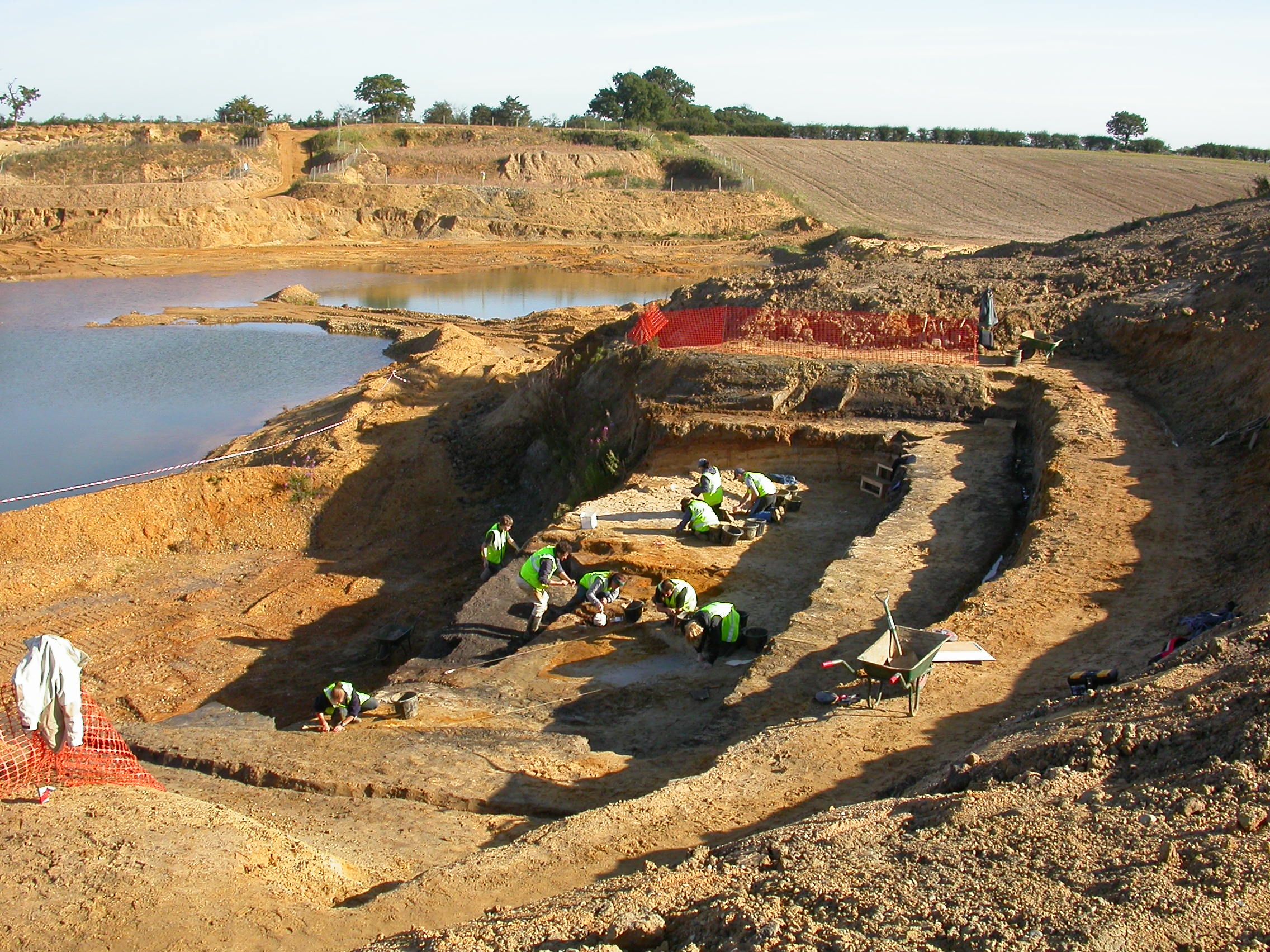
In the summer of 2001, bones and teeth of hippopotamus were found in a sand and gravel pit near Norton Subcourse, Norfolk. When the importance of the find became apparent, a major excavation campaign was undertaken in 2004. The work recovered an impressive array of early Middle Pleistocene fossils, including numerous hippopotamus bones, many of which show evidence of having been gnawed by hyaenas.
Today, the fossil-rich deposits are deeply buried beneath the modern landscape and are only accessible when uncovered during aggregate quarrying. The succession includes a basal sequence of Early Pleistocene shallow marine gravels, which are overlain by fluvial clays and silts, a woody peat representing an alder woodland, organic silts (containing most of the large mammal fossils), followed by riverine sands and gravels deposited by a fast-flowing river. The sequence is capped by Anglian Stage glacial deposits. The pre-Anglian fluvial deposits probably formed part of the Bytham... [read more]
|



